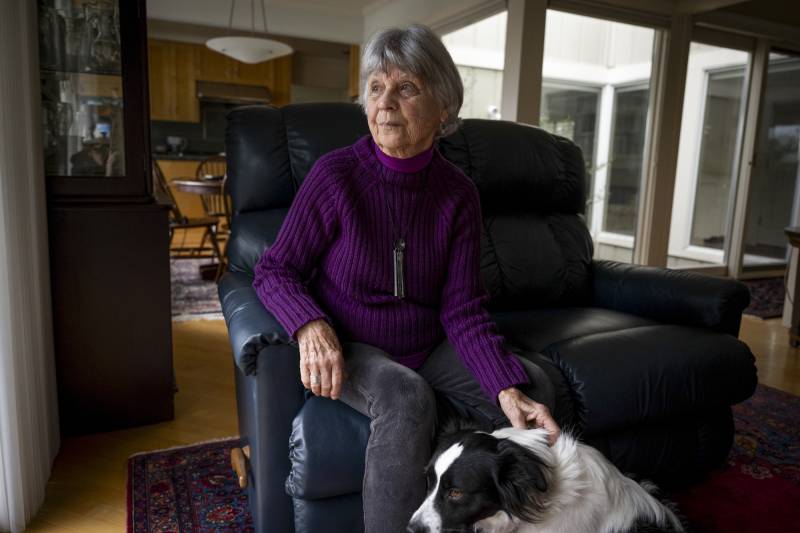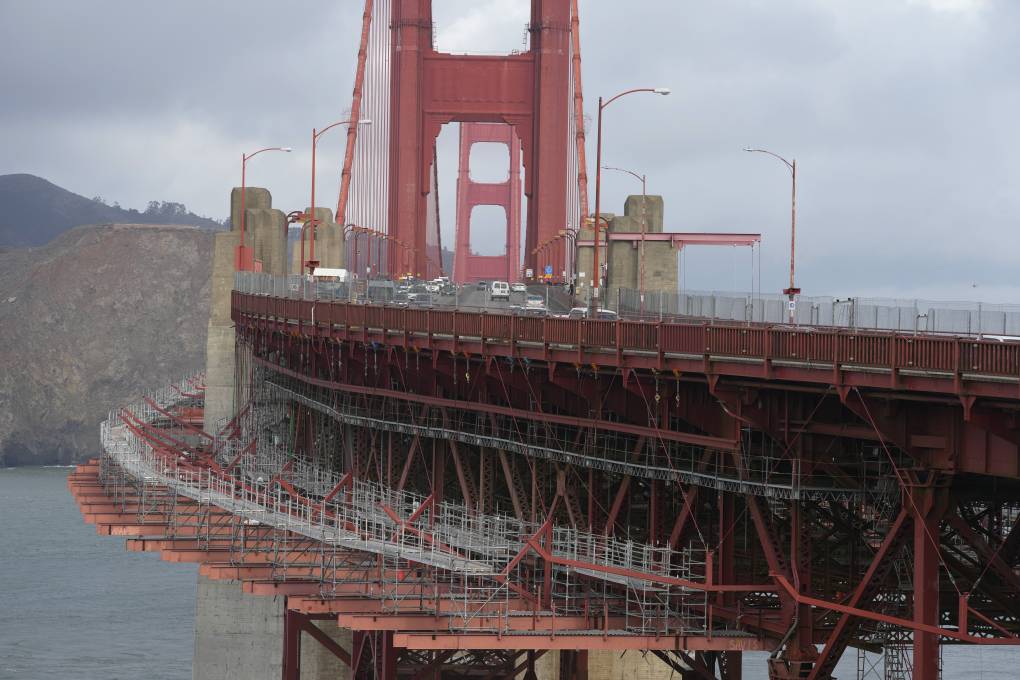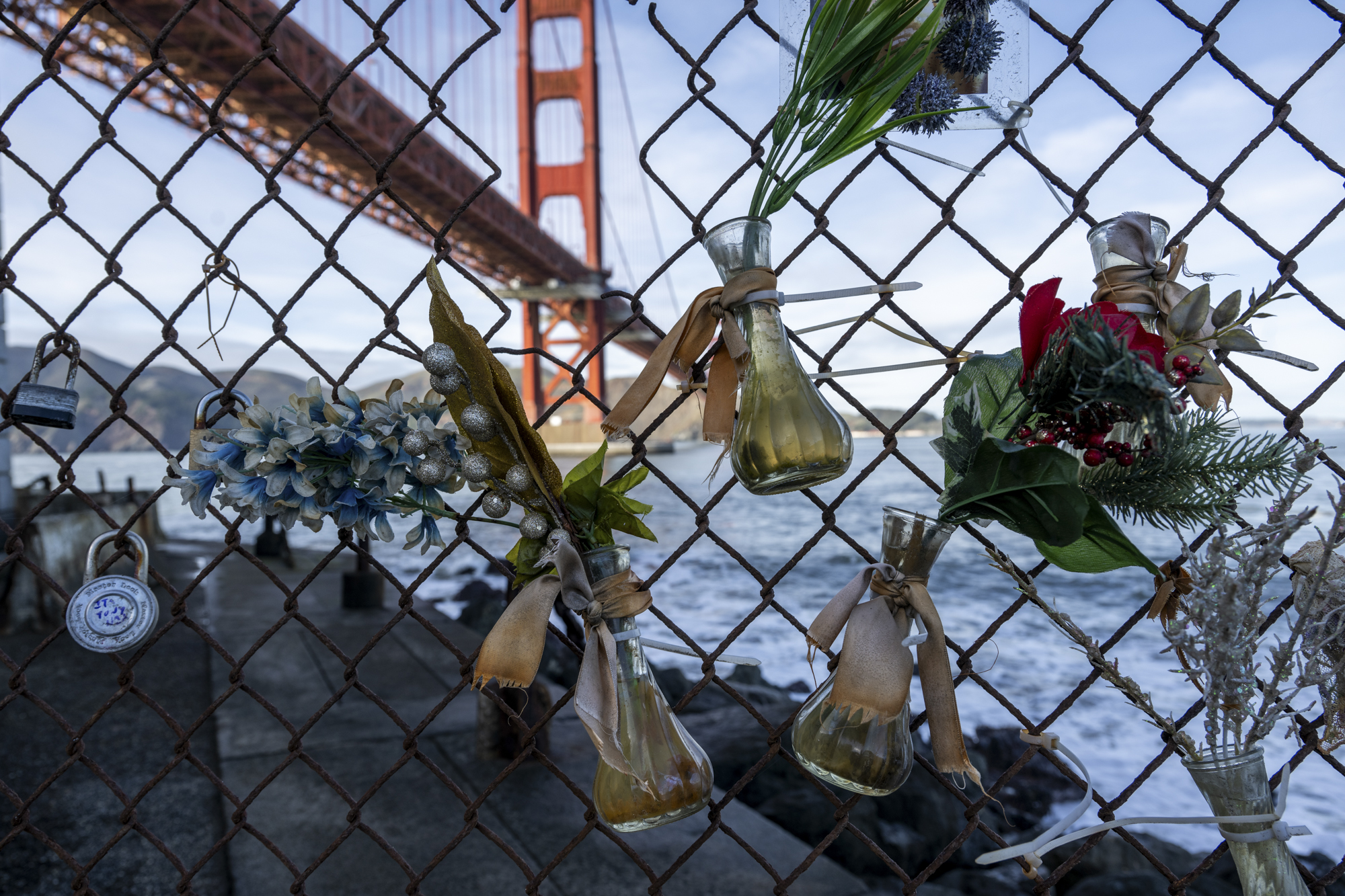Golden Gate Bridge officials have finally installed a stainless steel suicide deterrent net that extends 1.7 miles along the west and east sides of the bridge. It looks like a chain link fence suspended 20 feet below the pedestrian walkway, connected to the iconic reddish-orange beams of the bridge. The project cost $224 million, and city officials approved it more than a decade ago after years of pushing from suicide prevention advocates. After years of meetings and delays, the advocate’s dreams are a reality. What follows is the story of one family’s struggle and contains the description of suicide.
Michael James Bishop pulled out of his garage on Pine Street in San Francisco around 8:45 a.m. on March 28, 2011. He drove his gray Honda to the parking lot at the Golden Gate Bridge. He scrawled a detailed suicide note and laid it on the passenger seat of his car.
The sun was shining for the first time in weeks. It was 51 degrees outside. The 28-year-old with brown curly hair, green eyes and silver-rimmed glasses stepped out of his car and walked to the middle of the bridge. Then Bishop turned toward San Francisco and leaped.
“A motorist who was driving by happened to see my son go over the rail,” said Kay James, Bishop’s mother.

A half-hour later, U.S. Coast Guard workers recovered his body in the swirling waters below the bridge.
When James received a call from the sheriff, she was shocked. “That he would kill himself — never entered my mind. He was so sweet. He was a very gentle young man.”
Her son had a lot going for him. He was in a relationship with a woman he adored. He played the violin in an orchestra. He was on tap to start a new job at an environmental fund. In fact, that fatal day was supposed to be his first day at work.
But he’d struggled with depression in the past, and he was overwhelmed. The suicide note said, “I’m so sorry. I just can’t handle things.”
“I just felt so devastated,” James said. “You feel like your world is coming to an end.”
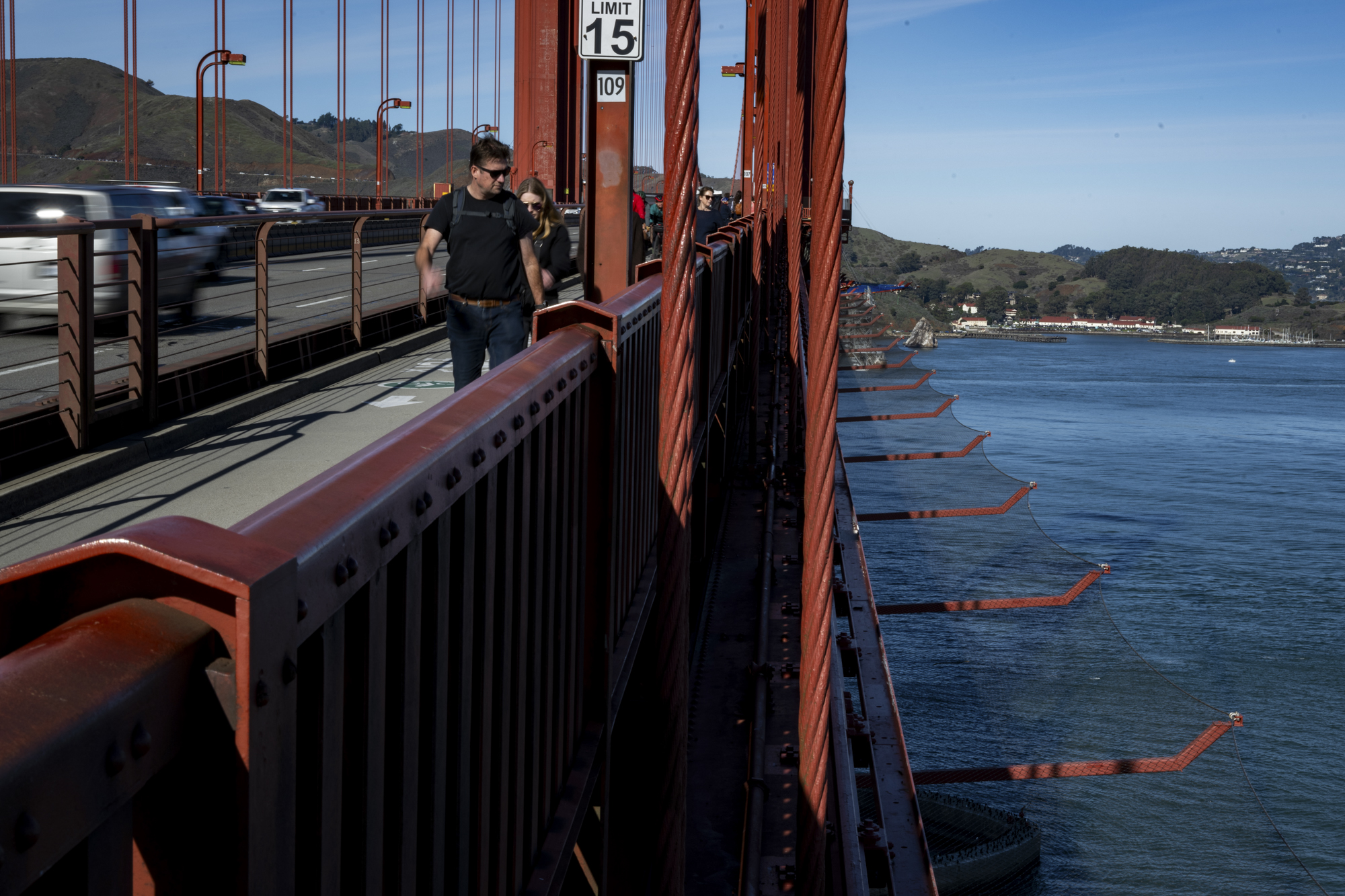
Her son’s computer history revealed he had researched the Golden Gate Bridge. It’s an iconic landmark, but it’s also a lethal one. Since 1937, about 2000 people have leaped over the guardrail — an average of two to three people a month. Bishop was one of 37 people who jumped to their deaths in 2011.
In the years that followed, James tirelessly advocated for a deterrent net. When she first started attending meetings before the transit district board of directors, she said they were not convinced a barrier was necessary.
“But, when they heard from the families of loved ones, they were very moved, and they changed their minds,” James said.
Why people choose the Golden Gate Bridge
The stunning location is commonly thought to be one reason why people jump from the magnificent structure into the crashing waves below. But mental health experts say the view is not the draw — instead, accessibility is usually the primary driver.
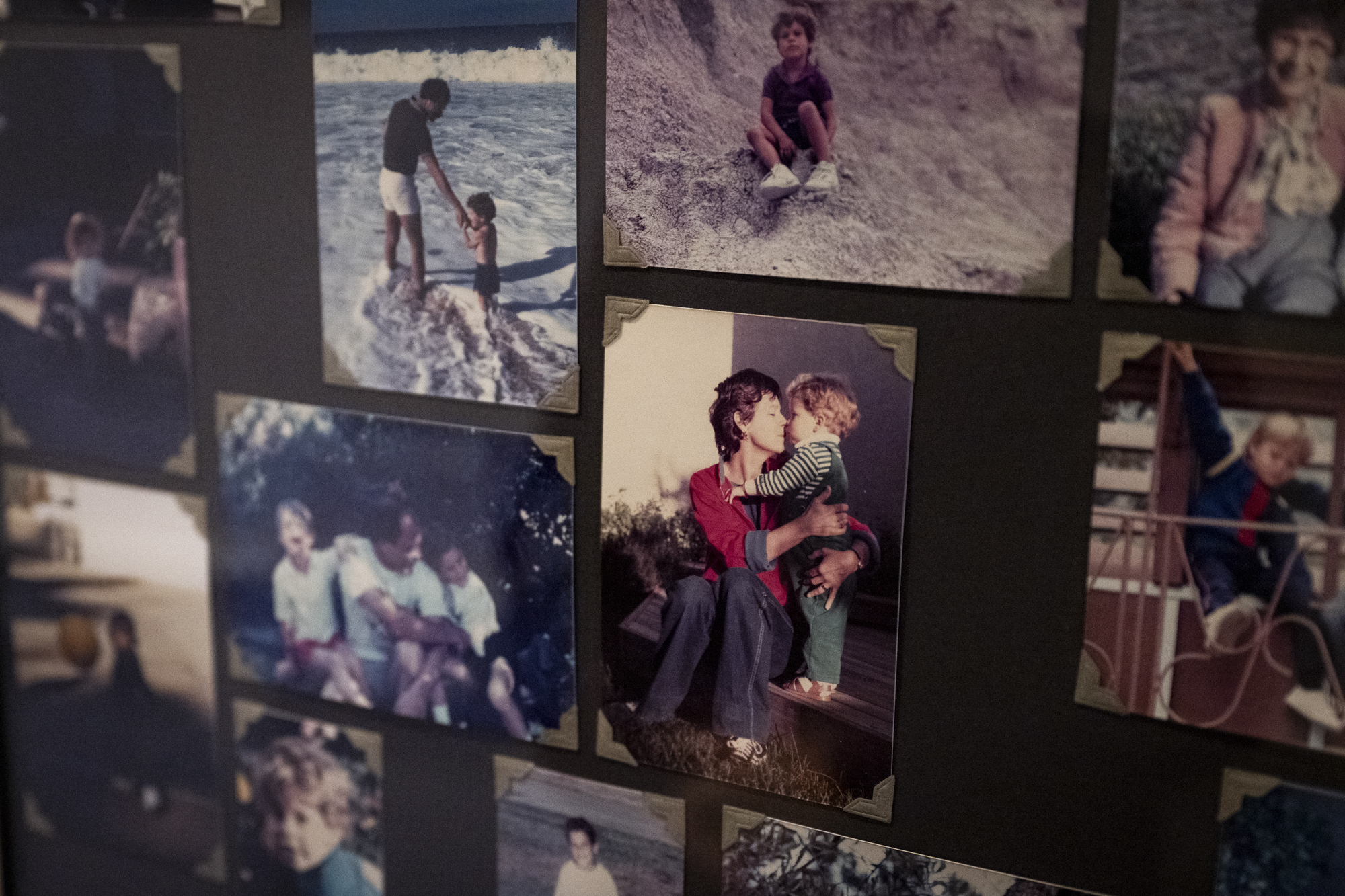
“People who have attempted suicide will say that they felt more comfortable with a given method,” said Matthew Nock, professor and chair of the Department of Psychology at Harvard University, “They were comfortable jumping off a bridge, whereas they were afraid to hang themselves or take an overdose, or they didn’t have access to a firearm.”
“The Golden Gate Bridge is the perfect target,” said Mel Blaustein, a psychiatrist at St. Mary’s Medical Center in San Francisco who has researched bridge suicides for many years. “There’s a parking lot, and there’s a bus that takes you there. It’s easy and fast. And when I say fast, it takes four seconds to hit the water.”
